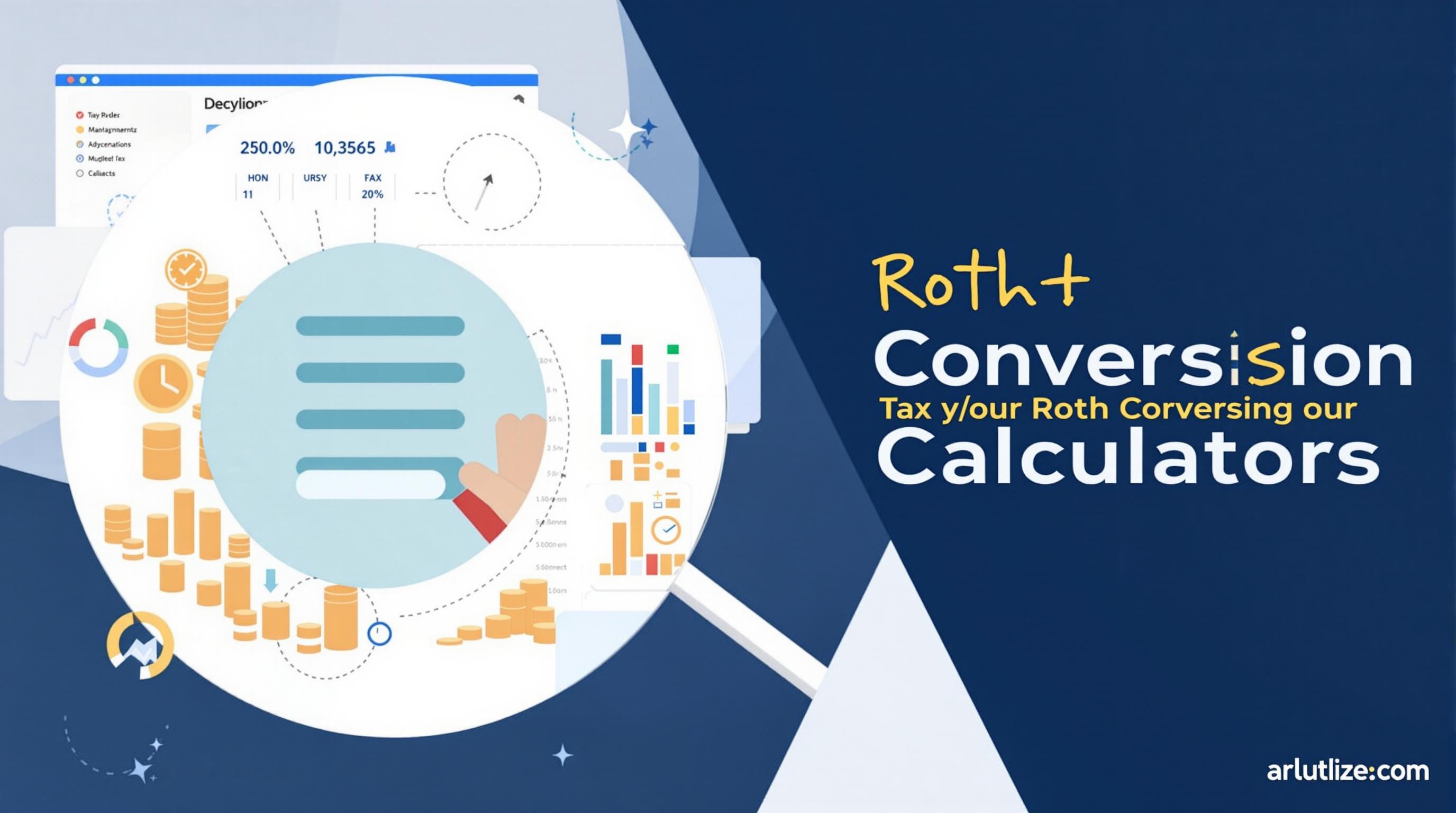Related Articles
- Top 6 Quantitative Hedge Funds Launched Since 2019 That Challenge Traditional Diversification Models
- Top 8 Cutting-Edge Retirement Income Vehicles From the Last Five Years Revolutionizing Financial Freedom
- Uncovering the Role of Behavioral Biases in Roth Conversion Decisions and Their Impact on Long-Term Wealth
- Top 6 Revolutionary Dividend Reinvestment Platforms Launched Since 2019 Redefining Passive Income Growth
- Top 7 Breakthrough Retirement Income Platforms Launched in the Last Five Years Compared and Ranked
- The Untold Influence of Cultural Artifacts on Expanding Investment Horizons and Mitigating Financial Risks
How Roth Conversions Influence Retirement Healthcare Costs: Overlooked Risks and Opportunities Explored
How Roth Conversions Influence Retirement Healthcare Costs: Overlooked Risks and Opportunities Explored
Roth conversions can significantly reshape your retirement healthcare costs, presenting both overlooked risks and hidden opportunities. Understanding how tax strategies intertwine with medical expenses is crucial for retirees and those planning ahead.
The Complex Relationship Between Roth Conversions and Medicare Premiums
When you convert a Traditional IRA or 401(k) to a Roth IRA, the amount converted is considered taxable income in that year, which can push you into higher income tax brackets. This spike in income has repercussions beyond just taxes—it can directly affect your Medicare premiums due to the Income-Related Monthly Adjustment Amount (IRMAA).
IRMAA adjusts your Medicare Part B and Part D premiums based on your reported income from two years prior. For instance, in 2024, if your modified adjusted gross income (MAGI) exceeds $97,000 as an individual (or $194,000 for a married couple filing jointly), you face higher premiums.
Take the example of John, a 65-year-old retiree from Mississippi. After converting $50,000 from his Traditional IRA to a Roth IRA in 2022, his MAGI jumped in 2022 tax filings, which in turn increased his Medicare premiums in 2024 by over $300 monthly. That extra cost over a decade adds up to a significant healthcare expense—around $36,000, which he hadn’t anticipated initially.
Why Might Roth Conversions Appear Attractive Despite These Risks?
Despite the immediate tax hit and potential Medicare premium hike, Roth conversions offer compelling benefits. For starters, withdrawals from Roth IRAs during retirement are tax-free; this predicts a possible reduction in taxable income later and, by extension, possibly lower IRMAA surcharges in the future. It’s a strategic bet on tax diversification.
Lisa, a 42-year-old accountant, explains, “Converting my pre-tax savings early meant I paid extra tax now but reduced financial surprises in retirement when healthcare costs can spiral unpredictably.” This approach can be particularly beneficial if tax rates rise or if individuals anticipate being in a higher tax bracket later on.
Fact Check: Medical expenses are a major driver of retirement costs with average annual healthcare spending per retiree projected to be roughly $5,000 in the United States, rising steadily with age (Kaiser Family Foundation, 2023).
Case Study: Retirement Planning Gone Awry
Take Mildred, a 70-year-old widow who converted a large portion of her 401(k) at age 68. The high one-time tax payment decreased her savings buffer. However, the more significant issue was the unexpected IRMAA increase, which pushed her Medicare premiums up by nearly 50%. Mildred’s fixed income could barely keep pace, forcing her to cut back on discretionary healthcare, like dental and vision—costs not covered by Medicare.
Her story shows a crucial but often ignored aspect: retirees must forecast not only their tax scenarios but also the cascading effects of those decisions on healthcare affordability. In health-related financial planning, it's not just about what you earn or save, but what you pay to maintain your health.
The Psychological Side: How the Fear of Higher Taxes Affects Decision-Making
Surprisingly, many retirees shy away from Roth conversions due to fear of paying higher taxes today, not realizing that such moves can be carefully structured to minimize IRMAA impact. Sometimes, avoiding small short-term tax hikes leads to substantial long-term expenses linked to healthcare and estate taxes. A strategic phased conversion can spread out income, keeping Medicare premiums stable over time.
Tip for younger readers planning ahead:
Even if Medicare is decades away, being aware of how Roth conversions influence healthcare costs years down the road helps you prepare smarter financial plans starting now.
The Long-Term Opportunity: Tax Diversification and Healthcare Cost Management
The beauty of Roth IRAs lies in tax flexibility. By holding both Roth and Traditional accounts, retirees can choose which account to draw from each year, optimizing tax brackets and managing reported income to avoid IRMAA climbs.
Research shows that retirees with diversified tax portfolios experience fewer surprises in healthcare premium adjustments, allowing greater control over budget allocation (Journal of Financial Planning, 2022).
Conversational Break: Let's Chat About Your Retirement Game Plan
Picture this: You, in your mid-50s, chatting with your financial advisor over coffee. You say, “I hear Roth conversions can mess with Medicare premiums. Is it worth it?” Your advisor smiles, “It depends. Timing, amounts, and your overall income picture are key. You can’t look at taxes alone; healthcare costs play a starring role in your retirement budget.”
That’s the crux. Roth conversions aren't “good” or “bad” universally—they’re tools with pros and cons that demand personalization.
Humorous Interlude: The Tale of the Overzealous Converter
Meet Dave, who enthusiastically converted his entire IRA balance in one tax year, thinking, “I'll just pay the tax now and be done!” Little did he realize, the next Medicare statement jolted him more than his morning coffee—his monthly premiums tripled! Dave joked later, “Guess I paid for my heart medication twice that year!”
While humorous, Dave’s experience underscores a real caution: big, unplanned Roth conversions can lead to unexpected financial strain, especially on healthcare costs.
Practical Advice: How to Mitigate Risks
- Spread conversions over multiple years to avoid income spikes.
- Keep an eye on MAGI thresholds to stay under IRMAA limits.
- Consult a financial advisor who understands Medicare intricacies.
- Factor rising healthcare costs into retirement income planning.
Further reading:
For a deeper dive, “Roth IRA Conversions and the Medicare IRMAA Cliff” by Bruce Hampton, CFP, offers comprehensive strategies tailored for retirees navigating this complex interplay.
Closing Thoughts from a 36-Year-Old Writer Planning Ahead
At 36, I’m not yet in retirement, but planning for those golden years includes understanding how decisions today cascade decades later. Roth conversions are a prime example where foresight turns complexity into opportunity.
Healthcare costs aren’t going away, and neither are taxes. Balancing the two smartly means a more comfortable retirement with fewer financial shocks. Whether you’re 18 just starting, or 70 managing retirement, knowing these dynamics is priceless.




